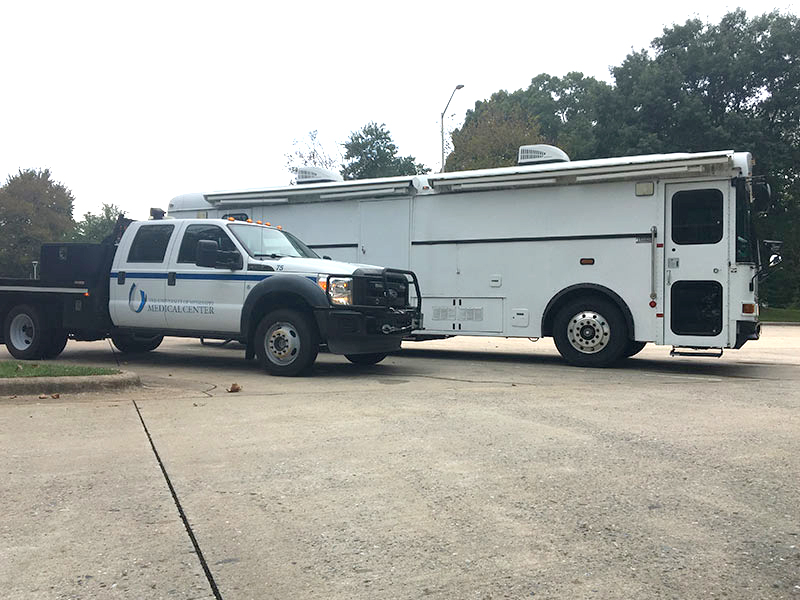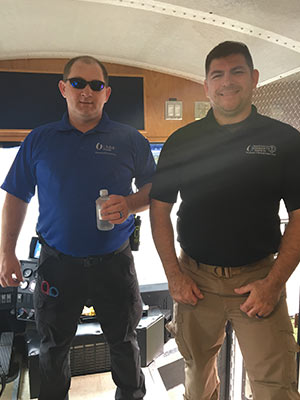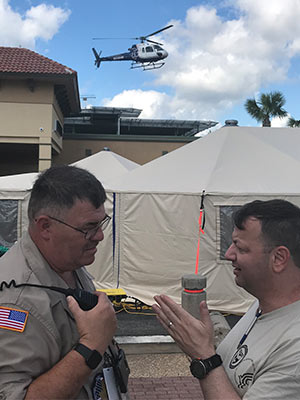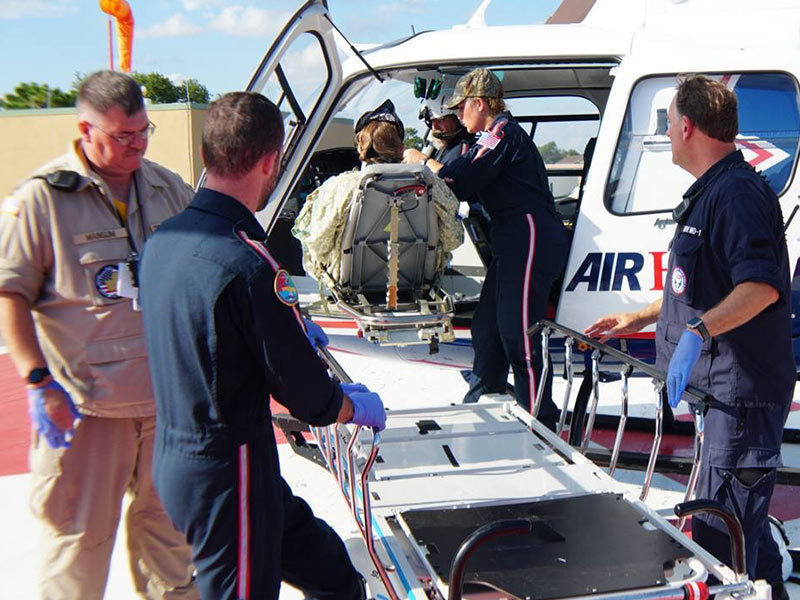Medical Center's disaster relief efforts reach beyond Mississippi

Many know the University of Mississippi Medical Center’s role in helping when disaster strikes inside state lines.
From the small scale to the large scale – a fatal two-car wreck to a hurricane or a tornado – the Medical Center is there.
Before the tornado hit Louisville in 2014, officials at MED-COM, the University’s communications center for emergency responders and health care providers during disasters and emergencies, were on the phone warning the hospital.
And after the tornado hit, the Medical Center used its resources and employees to support the local responders and hospital staff to evacuate the hospital and a nursing home that had a gas leak. At the same time, teams deployed mobile UMMC emergency medical trailers in the Wal Mart parking lot.
This year, however, the Medical Center’s disaster response stretched out of state to North Carolina and Florida.

In September, UMMC sent its ambulance bus and two staff members to help with patient evacuations in North Carolina during Hurricane Florence. The ambulance bus is a large bus capable of transporting 12 patients, including litters and stretchers.
“The limited resources in many of these disasters is the ability to move patients that are bed bound or otherwise unable to walk. The traditional ambulance has a limitation of one, maybe two patients,” Dr. Damon Darsey, associate professor of emergency medicine and medical director of the Mississippi Center for Emergency Services, explained. “The ambulance bus allows us to go in and triage the patients … and move a dozen at a time.”
Darsey said the idea for the ambulance bus came from lessons learned locally – many from Hurricane Katrina.
“We have two ambulances per county (on average), and if we have a big nursing home to move, we’ve got a lot of work to do,” Darsey said.

Heath Williams and Brian Garrett, both emergency response managers for the Center for Emergency Services, each went to North Carolina with four members of the Medical Reserve Corps, a group of volunteers recruited and trained by the Medical Center. The group currently has over 400 members made up of physicians, nurse practitioners, nurses and pharmacists, in addition to other medical professionals.
Williams, who’s been at the Medical Center for over four years, said this is the first time he’s been sent out of state in his job.
Garrett was the first of the two to go to North Carolina, and he made the trip before Florence made landfall. During his nine days there, he completed five missions, transported a total of 30 patients and worked many 20-plus hour days.
During one mission shortly after landfall, he drove the ambulance bus from Raleigh to Wilmington, where the hurricane hit, in 30 to 40 m.ph. winds to evacuate patients in a flooded nursing home.
“We ended up driving back into the storm for evacuation because these people were sitting there with no power, in danger of water coming through the doors of the nursing home,” he described. “You’re definitely in a heightened sense of awareness.”
He said what would have normally been a two-hour drive turned into five hours navigating flooded roads and downed trees and power lines.
“It was kind of like two disasters in one – the hurricane everybody was prepared for … but then the flooding came that nobody had prepared for,” Garrett said.
Williams relieved Garrett after nine days and continued the work for another week. His experience started off with frustration – the operating base put the wrong type of fuel in the ambulance bus, so the first couple of days were spent getting the bus operating again.
Williams and his team then made a trip to South Carolina to pick up patients at a nursing home and take them back to their original facility in Jacksonville.
Williams particularly remembers the people at one medical needs shelter operating out of C3 Church in Clayton, N.C.
“Those were very compassionate people – they went above and beyond and out of their way (to care for the patients),” he said. “It was a very heartwarming thing seeing total strangers come together from all over the nation and accomplishing a job.”
All in all, Williams, Garrett and the ambulance bus traveled close to 3,000 miles during the course of the trip.
Less than a month later, Williams headed to Florida a day after Hurricane Michael made landfall near Mexico Beach.
At the same time, another UMMC employee, Dr. Carl Mangum, was also helping with Hurricane Michael relief in Florida – but in a different role.
Mangum, a psychiatric mental health nurse practitioner and associate professor in the School of Nursing, serves as the team commander for the federal Delta-1 Disaster Medical Assistance Team. The team, or DMAT for short, operates under the National Disaster Medical System.

The teams are deployed to deliver medical care after a disaster. Mangum and his 35-person team from Mississippi and Louisiana helped Ft. Walton Beach Medical Center with the influx of patients from Panama City and Mexico Beach, areas struck hard by the hurricane. The hospital was running at 156 percent capacity when they arrived, Mangum said.
“We were the first team to engage with patients,” Mangum said of the beginning of their 11-day trip with another DMAT from Maryland. The first night there, some of his team members were inside the hospital’s emergency room.
“They were helping triage, helping with dressings, taking care of patients, anything… They had people stacked up in the hallways, they just needed some manpower,” Mangum recalled.
The rest of the trip was spent mostly operating from tents outside the hospital.
Magnum remembers some sick children who came from Panama City needing to see a doctor.
“Luckily, Maryland 1 (DMAT) had a pediatric ER doctor” that stepped in to care for those children, who Mangum said were very resilient.
“Kids tend to fare better than adults do in those really hard situations because you could tell the people that were from around Panama City and Mexico Beach, you could just see it on their faces – the struggle they were having internally with all that happened and trying to deal with it,” Mangum said.

Magnum brings the knowledge and experience from his 15 years of experience in this area back to UMMC.
UMMC’s expanding network and resources are leading to more requests for help and more attention from other states, and it does not look like the demand for this type of work will be slowing down any time soon.
Terry McLeod, the clinical director for Center for Emergency Services, runs point on UMMC’s missions.
“As people become more comfortable with what your experience level is and knowledge of your resources, you tend to get requested more,” he said.


